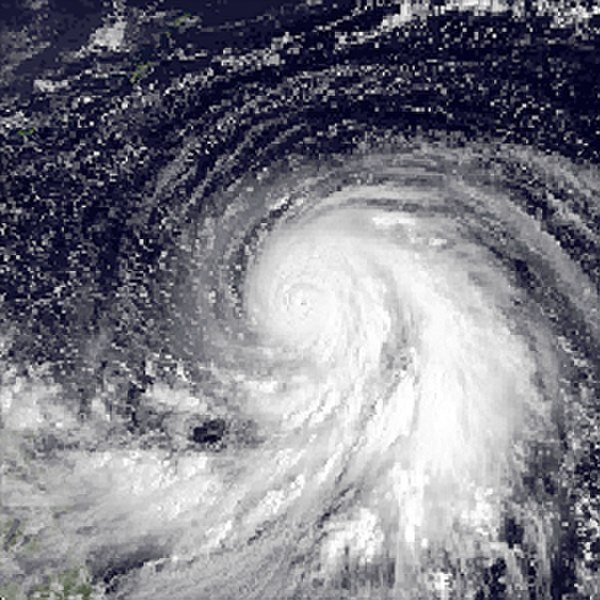Typhoon Forrest, known in the Philippines as Typhoon Ising, was the fastest-intensifying tropical cyclone on record, with its minimum barometric pressure dropping 100 mbar (3.0 inHg) from September 22 to September 23, in less than a day. Forrest formed from a tropical disturbance far from land in the western Pacific Ocean. On September 20, the system was classified as a tropical storm, and thereafter began to intensify. The next day, Forrest reached typhoon status, and the intensification process accelerated. The storm prudently strengthened on September 22, and the following morning, attained peak intensity following a pressure drop of 100 mbar (3.0 inHg) in slightly less than 24 hours. Thereafter, Forrest began to weaken slowly as it moved northwest. Approaching Japan, Super Typhoon Forrest first hit Okinawa on September 27. Nearby, a tornado hit Inza Island, destroying 26 homes and injuring 26 people. Forrest then moved north, impaling the Japanese archipelago before transitioning into an extratropical cyclone on September 28, before eventually dissipating on October 4. The torrential rainfall caused by the typhoon triggered deadly landslides and flooding across Japan. In all, the typhoon killed at least 21 people, left 17 listed as missing, and injured 86. Forrest flooded 46,000 homes in muddy water, over 100 dwellings were destroyed, and 2,560 people were rendered as homeless. Seven flights were called off and 27,000 people were stranded. In addition, 67 bridges and 818 roads were damaged.

Typhoon Forrest near peak intensity on September 22.
Typhoon Ida, also known as the Kanogawa Typhoon , was the sixth-deadliest typhoon to hit Japan, as well as one of the strongest tropical cyclones on record. On September 20, Ida formed in the Western Pacific near Guam. It moved to the west and rapidly intensified into a 185 km/h (115 mph) typhoon by the next day. On September 22, Ida turned to the north and continued its quick rate of intensification. Two days later, the Hurricane Hunters observed a minimum barometric pressure of 877 mb (25.9 inHg), as well as estimated peak winds of 325 km/h (202 mph). This made Ida the strongest tropical cyclone on record at the time, although it was surpassed by Typhoon June 17 years later. Ida weakened as it continued to the north-northeast, and made landfall in Japan on southeastern Honshū with winds of 130 km/h (80 mph) on September 26. It became extratropical the next day, and dissipated on the September 28 to the east of the country. Ida caused torrential flooding to southeastern Japan, resulting in over 1,900 mudslides. Damage was estimated at $50 million, and there were 1,269 fatalities.

Damage from Ida in Izunokuni, Shizuoka


